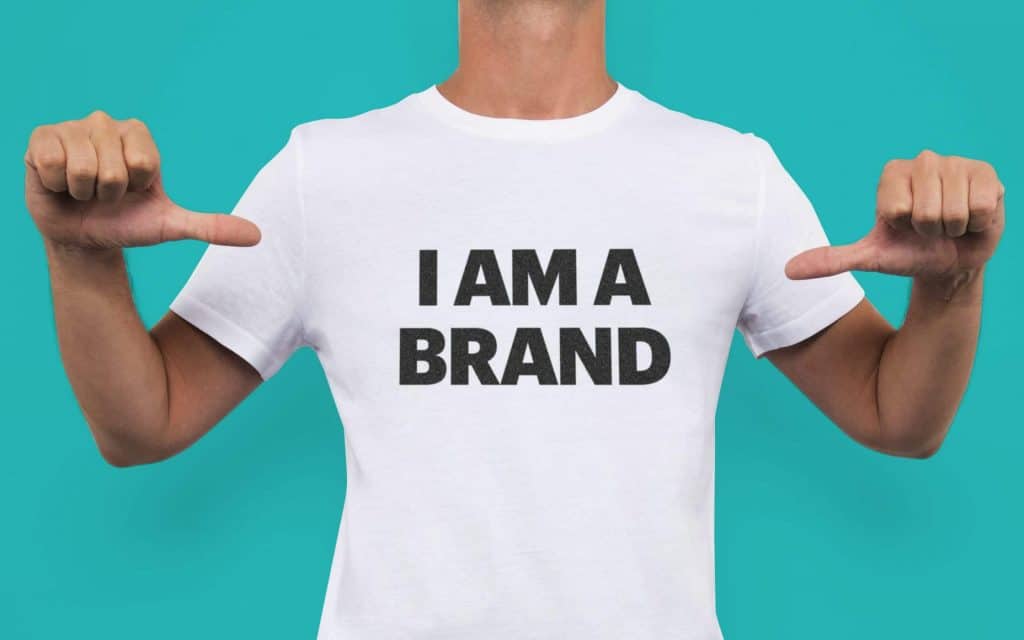Everyone knows the importance of good branding when it comes to your business but what about building a personal brand that’s associated with you as an individual? Never underestimate the power of personal branding when done right it can be your most valuable asset.
What then is personal branding?
Personal branding is what shapes the perception of an individual in the eyes of the public. Personal branding is all about building your reputation, creating an image of yourself for the outside world, and marketing yourself as an individual. Essentially, your brand is the story that’s told about you when you’re not in the room.
It may feel a bit uncomfortable to think of yourself as a brand. But the truth is that everyone already has a personal brand. What do people say about your work? What adjectives do they use to describe you? Are they positive or critical?
Your story is also being told online. What’s being said about you in the virtual space? You have a choice to actively manage your brand or leave it to chance.
Building a personal brand intentionally will allow you to tell your story as you want it to be told, establish yourself as an expert and leader in your field, and connect with your customers and clients beyond your products and services alone.
So, how do you go about building a personal brand? Here are the 5 steps you need to think about:
Understand why you’re building a personal brand
Okay, so it’s clear that you need a personal brand if you want to be successful. But how exactly is it going to help you? What are your specific reasons for wanting to create a strong brand? Getting clear about what you’re trying to achieve with your brand will help you map out the steps to get there.
Take control of your P.I.E.
Unfortunately working hard or having great ideas is rarely enough these days. No matter what you do or what your goal is, the secret is to be in control of your P.I.E.: Performance, Image, and Exposure. All three pieces of your professional P.I.E. need to work in your favor if you want your brand to succeed.
Performance is fundamental, of course. You need to deliver quality results in your work. Image is about what other people think of you it’s your personal brand! And the final piece, Exposure, is about making sure that people know who you are and what you stand for (I’ll show you how, below).
Try to figure out where you can improve: do you deliver top results, but your image isn’t great? Is your image fine, but you’re lacking exposure? You need to pay attention to all three for the best results.
Find your brand story and create your brand framework
Before you start telling your story, you need to work out what that story will be. What do you want to be known for? What will make you stand out against your competition? It’s important that you develop a deep understanding of your brand personality and personal brand identity.
A personal brand framework, or story, consists of a number of key elements:
Brand purpose
What is your overall purpose, your ‘why’? Why do you get up in the morning and go to work? What is it that you’re ultimately trying to achieve? This could be professional success or helping or supporting others with your product or service.
Core values
Brands are more and more value-driven today and your personal brand must be even more so. What do you want to stand for? What do you value most of all in your personal and professional life? Creativity and innovation? Integrity and respect? Discipline and dependability? Try to come up with five core values.
Brand benefits and reasons to believe
A brand needs to be clear about the functional and emotional benefits it delivers to its customers. When it comes to your personal brand what are the hard and soft skills that you bring to the table? What are your unique strengths? Hard skills are applicable things like (in my case) writing, coaching and mentoring, public speaking, workshop facilitation, business strategy, branding and marketing. Soft skills are attributes like self-motivation, strength, independence, quick thinking and open mindedness.
Next, you’ll want to consider the evidence you have to support those claims. What awards and accolades do you have? What qualifications or client testimonials? Make a list of all of your degrees, awards, credentials, testimonials, prominent media appearances and key examples of your work (i.e. a YouTube channel with your best speaking engagements or a professional blog that features your top writing examples).
Tangible branding elements
Finally, a brand will always have tangible elements like a brand name, logo, colors and fonts your brand design. What are the tangible elements of your personal brand?
Online, this will include the colors and design elements you use on your website and social networks. Many freelancers who build a brand off of their name also get a personal logo design to use on business cards, their website, etc. Offline, personal branding encompasses your physical appearance including your grooming, the clothes you wear and how you speak, as well as any memorable personality quirks!
Create your own personal brand framework, print it out and stick it up where you can see it. As you would with a business brand, you can now use this personal branding framework to guide all that you do, bringing your online and offline personal brand in line with your best self.
Source: Anna Lundberg
READ NEXT ON: Paying Influencers On A Budget: 5 Ways To Pay Your Ideal Influencer






































